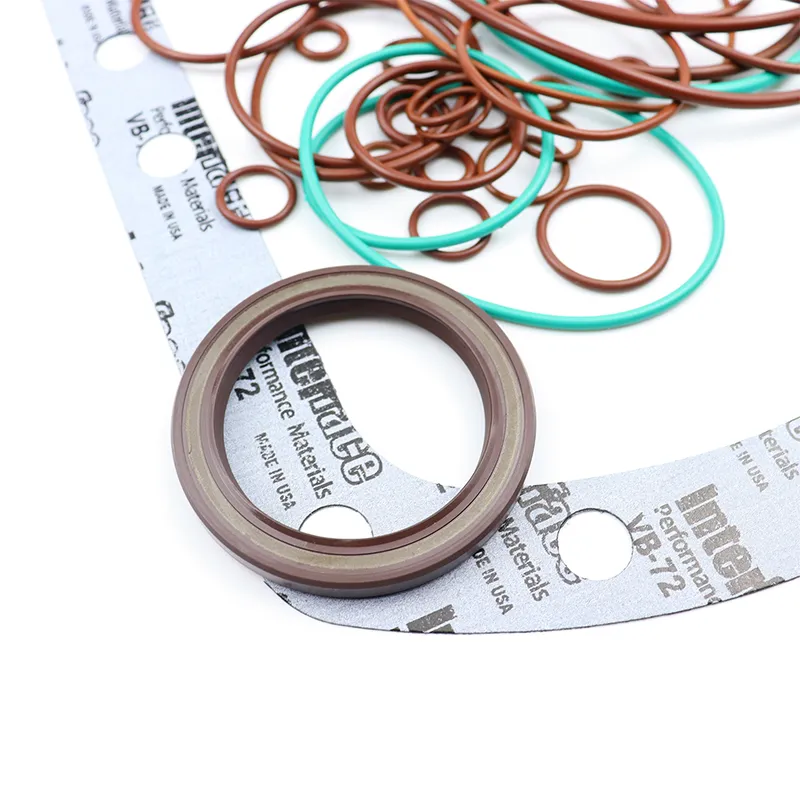okt . 13, 2024 15:30 Back to list
High-Performance Seals for Extreme Temperature Shaft Applications and Their Benefits
High Temperature Shaft Seals An Overview
In many industrial applications, maintaining the integrity of machinery is paramount to operational efficiency and longevity. One of the critical components in machinery design is the shaft seal. In situations involving high-temperature environments, specialized high-temperature shaft seals play an essential role in ensuring optimal performance and reliability.
What Are High Temperature Shaft Seals?
High temperature shaft seals are designed to prevent the escape of lubricants and the ingress of contaminants in machinery operating at elevated temperatures. These seals are particularly important in applications where traditional seals may fail due to thermal degradation or material limitations. They are commonly used in a variety of sectors, including petrochemicals, aerospace, automotive, and food processing.
Materials Used in High Temperature Shaft Seals
The effectiveness of high temperature shaft seals largely depends on the materials used in their construction. Standard rubber seals can typically withstand temperatures up to 70-100°C (158-212°F); however, high-temperature seals can be made from advanced materials like fluoropolymers, silicone elastomers, or special metal compounds. Fluoropolymer seals, for example, can endure temperatures up to 260°C (500°F) and are highly resistant to chemical degradation, making them ideal for harsh environments. Silicone seals, on the other hand, provide excellent thermal stability and flexibility, which are vital in applications with fluctuating temperatures.
Design Considerations
When designing a high temperature shaft seal, several factors must be considered
1. Operating Temperature The maximum and minimum temperature the seal will encounter during operation must be identified to choose the right material.
2. Pressure Sealing applications may involve varying pressure levels. High temperature seals must be designed to handle these pressures without losing their sealing capabilities.
high temperature shaft seals

3. Speed The rotational speed of the shaft can lead to increased friction and heat generation. Designers must ensure that the chosen seal can withstand the increased wear and tear associated with high-speed operations.
4. Media Compatibility Often, seals will contact lubricants or other chemicals. Compatibility of the seal material with these substances is critical for optimal operation.
5. Environmental Considerations Factors such as humidity, dust, and other environmental conditions can affect seal performance. High temperature seals should be resistant to environmental degradation.
Applications of High Temperature Shaft Seals
High temperature shaft seals are found in a wide array of applications. In the automotive industry, they are commonly used in engines and transmissions where heat generated can quickly deteriorate standard seals. In aerospace, seals must endure extreme temperature fluctuations during flight, making high-temperature materials vital.
In the food industry, where machinery must operate at elevated temperatures for sterilization, high temperature seals are crucial for maintaining hygiene without compromising the process. Similarly, in petrochemical applications, where seals are exposed to extreme heat and harsh chemicals, the selection of the appropriate seal can impact the overall system's efficiency and safety.
Challenges and Innovations
While high temperature shaft seals play a critical role in extending the lifespan of machinery, they are not without challenges. Issues such as wear, thermal expansion, and the formation of carbon deposits in extreme environments can lead to seal failure. To combat these challenges, ongoing research focuses on developing new materials and designs that enhance performance. Innovations such as self-lubricating seals, advanced surface finishes, and better installation techniques are being explored to improve reliability.
Conclusion
High temperature shaft seals are an indispensable component in many industrial applications, ensuring that machinery operates smoothly despite the challenges presented by elevated temperatures. As technology advances, the development of even more robust and durable sealing solutions will continue to support the efficiency and longevity of modern machinery. Understanding the materials, design considerations, and applications of high-temperature seals is crucial for engineers and designers aiming to enhance their systems' performance.
-
The Trans-formative Journey of Wheel Hub Oil Seals
NewsJun.06,2025
-
Graphene-Enhanced Oil Seals: Revolutionizing High-Pressure Oil Sealing
NewsJun.06,2025
-
Future of Hydraulic Sealing: Advanced Intelligent TCN Oil Seals
NewsJun.06,2025
-
Don’t Let a Broken TCV Oil Seal Ruin Your Day
NewsJun.06,2025
-
Bio-Inspired Dust Seals for Better Sealing Performance
NewsJun.06,2025
-
Biodegradable and Sustainable Hydraulic Seal Materials
NewsJun.06,2025
-
Top Oil Seal Solutions for Your Industrial Needs
NewsMay.22,2025
Products categories
















